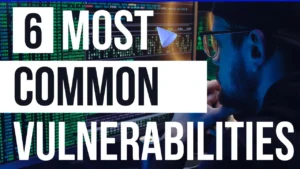Introduction
Cybercrime is defined as illegal behavior involving a computer, a computer network, or a networked device.
Most, but not all, cybercrime is conducted by profit-driven cybercriminals or hackers. Individuals or groups can commit cybercrime.
Some cybercriminals are well-organized, employ advanced tactics, and have a high level of technical expertise.
While the majority of cybercrime is carried out in order for cybercriminals to profit, some cybercrime is carried out directly against computers or devices in order to harm or disable them.
Others transmit viruses, unlawful information, pictures, and other things via computers or networks.
Cybercrime has a significant financial impact. Ransomware assaults, email and internet fraud, identity fraud, and efforts to steal financial account, credit card, or other payment card information are all examples of cybercrime.
In this blog we will learn about different types of cybercrime with examples and also what steps any individual or a company can take to prevent it.
What are different types of Cybercrime
In general, Cybercrime can be classified into three major categories. Below they are described using examples.
Cybercrime Against Individuals
- When someone takes your identity and uses it to access resources such as credit cards, bank accounts, and other advantages in your name, this is known as identity theft.
- Online fraud is the act of obtaining a victim’s sensitive information (such as bank account numbers, personal information, and credit card numbers) and utilising phishing and spamming to acquire or withdraw money from the victim’s account.
- Spoofing is defined as imitating something while emphasising its distinguishing characteristics for personal advantage or profit.
- Cyber stalking is defined as an individual’s or a group’s unwanted or obsessive attention to another person using computer technology such as the Internet, e-mails, SMS, webcams, phone calls, websites, or even movies.
- Hacking is the act of gaining unauthorised access to a computer system for personal advantage or abuse.
- Cracking is the process of digitally deleting a computer program’s or software’s copyright protection code.
- Defamation is the practise of slandering someone’s reputation through the use of a computer or electronic service, as well as the Internet.
Cybercrime as a Threat to Business
- Using an e-mail attachment as a means to transfer a virus into someone’s computer programmes, disc drive, data, or booting sector of a hard drive to slow down or damage the system.
- Two or more people claiming the same or nearly similar domain name or any service available on the Internet is referred to as cybersquatting (such as a profile of Facebook, Twitter, Instagram).
- When a network service is unavailable, cyber vandalism refers to the destruction or damage of data.
- Any illegal conduct that deprives the owner of his or her rights entirely or partially is considered an intellectual property crime. These offences include copyright infringement, trademark infringement, software piracy, patent infringement, design infringement, and source code infringement, among others.
Cybercrime Against the State
- Cyber warfare is an online battle that encompasses hijacking or blocking official websites, interrupting network connections, stealing or changing sensitive material from government or financial organisations, and other politically motivated attacks on information and associated systems.
- Cyber terrorism is an Internet-based attack that involves large-scale attacks that utilise malware or viruses to cause havoc on computer networks and attack governments and businesses.
Which factors are used in Cyber crime?
A hostile attempt to destroy or disrupt a computer network or system is referred to as a cyber-attack.
Viruses obstruct critical operations involving data and papers. As a result, it is the most potent and susceptible computer threat.
Every computer user must be aware of the software and applications that can aid in the protection of personal computers against cyber-attacks.
The following are the most common sources of cyber-attacks.
Programs that can be downloaded
Downloadable applications and files are one of the most common ways for viruses to spread. The most common sources are executable programmes and files. If a user wants to download a software or a file from the Internet, he or she must first scan it.
Software that has been pirated or cracked
It is unlawful to download pirated or cracked software. The majority of individuals who download them from the internet are unaware that they may include viruses and other bug sources.
These viruses and bugs are extremely tough to identify and eliminate. As a result, a user should only obtain original software from reputable sources.
Attachments to Emails
Anyone, whether you know them or not, can send you an e-mail attachment. It is possible to damage your computer by clicking on unknown links or attachments.
Before downloading an e-mail attachment, it is required to scan it.
Malicious Websites
The Internet is one of the easiest ways to obtain a virus on your device. Before visiting any website, double-check the URL. Always search for https in a URL if you want it to be safe.
Infected USB drives or hard drives
Malware are commonly spread via flash drives and CDs. A virus can be transmitted from one system to another when a user transfers contaminated data on flash devices or CDs.
To avoid this, a user must inspect it thoroughly before transmitting any data to an unknown user.
How to prevent cyber crimes?
You will never be able to protect your self hundred percent from all the cyber crimes. However, There are several methods you can use make it really difficult for the cyber criminals to exploit your system. Few of them can be:
- System access control is a technique for preventing unwanted access to a computer system.
- Data access control is a way for a user to keep track of who has access to what data and for what reason. A user can create restrictions for other users based on their security level.
- System and security administration is responsible for monitoring and allocating system resources such as disc space, performing backups, granting user access, managing user accounts, and ensuring system security.
- Secure by design means that the hardware and software were built with security in mind from the start.
Six measures to prevent cybercrime
Below are a few measures you can implement in your home or office system to help you prevent all kinds of cybercrimes.
Antivirus Protection Software
Antivirus software is installed on your computer and may search for and eradicate viruses that have already infected you.
The software may also be set to scan diskettes when they are placed into the drive, scan files when they are downloaded from the Internet, and scan e-mail when it is received.
Computer viruses, computer worms, Trojan horses, spyware, and adware are all examples of malware that anti-virus software is used to prevent, detect, and eradicate.
Computer security, particularly protection against social engineering tactics, is a typical feature of antivirus software products and services.
Use of digital certificates
A digital certificate is an electronic passport that enables a person, machine, or organisation to securely transmit data over the Internet utilising the Public Key Infrastructure (PKI).
A Public Key Certificate is another name for it.
Use of digital signatures
A digital signature is a type of electronic signature that verifies the validity and integrity of a communication, software, or digital document.
An electronic signature is another name for it. It’s commonly used in e-commerce, software distribution, financial transactions, and other instances where forgery or tampering detection is required.
Firewall implementation
It secures gateway servers to external networks, like as the Internet, to safeguard private networks. It protects any network from hacking, cyber-attacks, and other forms of illegal access.
It might be a stand-alone computer or software installed on a router or server. As a result, it is divided into two types: hardware and software firewalls.
Advanced firewalls operate at the network stack’s application layer. This implies they can intercept any packets sent to or received from running software.
Instead of screening connections by port, application firewalls implement their filtering rules per process (i.e., to allow or block).
Use of strong Password
A password is a string of characters that is used to confirm a user’s identity during the authentication process.
It’s usually combined with a username or user ID. It is intended to be known only by the user and to grant access to a device, application, or website to that user.
For security reasons, the computer system conceals the password field with asterisks or bullets when a password is typed.
Weak password: This is a small password that just contains letters or numbers. Names, phone numbers, and birthdates are all easy to recall. It’s simple to crack.
Strong password: This consists of a combination of upper- and lowercase letters, digits, and special characters. It’s a tough nut to crack.
File and Folder Access Permissions
The process of assigning permissions or access rights to individual users and groups of users to read, edit, browse, and execute the contents of files and folders is known as file and folder access permissions.
The following are some particular permissions:
- Read: Allows you to read or access the contents of a file or folder.
- Write: Allows you to write and add files and folders.
- Read and Execute: Allows you to read and access the contents of the file, as well as execute it.
- Modify: Allows you to read and write to the file, as well as delete the file or folder.
- Full control: Allows you to read, write, change, and delete files and directories.
Some common terms for the cyber security
- The practise of keeping data and information private and concealed from dangers is known as confidentiality.
- Integrity refers to the practise of preventing unauthorised parties from altering data and information.
- The availability of information refers to making sure that authorised parties have access to it when they need it.
- Only authorised users have access to resources, thanks to access control.
- Authentication is the process of verifying and ensuring a user’s identity.
- Non-repudiation refers to the process of ensuring that a transmitted communication was delivered and received by the parties claiming to have sent and received it.
- Privacy guarantees that information is only accessible to those with the legal authority to use it.
- Steganography is a method of concealing sensitive information in any kind of media. It works on pictures, video files, and audio files. It aids in the protection of data’s confidentiality and integrity.
- Cryptography is a method for ensuring the secrecy of messages. It means “secret writing” in Greek. It entails the encryption and decryption of data.
- Cyber trafficking refers to any illegal transaction carried out via the Internet using a computer and/or computer services.



